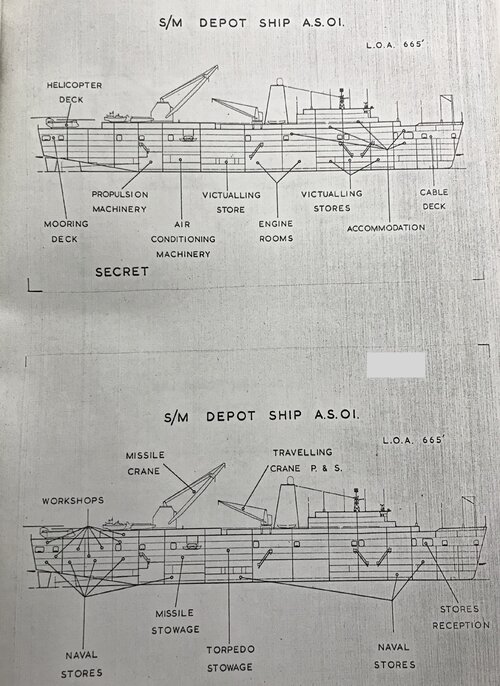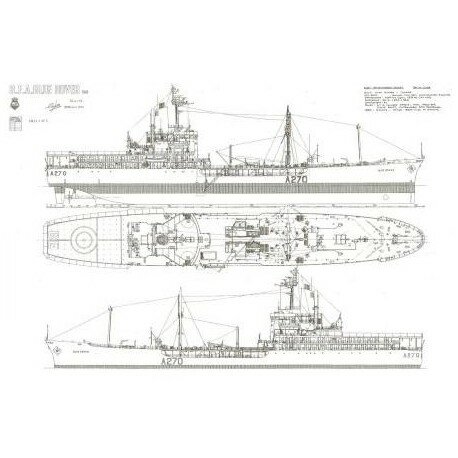A Tentative Fleet Plan
I really should change my personal text
- Joined
- 9 April 2018
- Messages
- 1,213
- Reaction score
- 2,835
As a result of a December 1964 request from the Indian Prime Minister Lal Bahadur Shustri in London for a joint US-Soviet nuclear guarantee, the UK Foreign Office drew up a discussion paper with the Ministry of Defence on British nuclear forces outside of the NATO area. A follow-up Foreign Office Planning Staff submission argued that Britain should maintain a nuclear capability East of Suez, but recognised that the tenure of the Singapore Base could not be guaranteed indefinitely, and that an alternative means of maintaining this capability should be studied.
An initial Navy Department study on Polaris Deployment East of Suez in January 1965 found that with 5 boats it would be possible to maintain one submarine on patrol on the Indian or Pacific Ocean. However with a reduction to 4 boats, this could not be maintained "without very expensive support facilities which at the present do not exist nor are planned."
A new depot ship to support the Polaris submarines would cost £18-20 Million and would take six years to build and deploy and the force would require a suitable base, one of the options being Fremantle, Australia. At the end of January, the 5th Submarine was cancelled, and as a result of the high cost of the depot ship, the subject received little thought for several months.
In June 1965, the Navy Department pointed out that was already planned for use by other submarines East of Suez, and was intended to be ordered in October 1968 and available in July 1972. If the ship was fitted "for but not with" the handling facilities for Polaris with the addition of only £0.5 million to the final cost. With two years of notice, and £4 Million for fitting out the depot ship would enable deployment of Polaris submarines East of Suez. The Chiefs of Staff (COS) recommended that this be pursued, to which Denis Healey agreed.
In January 1966, Harold Wilson requested that the Overseas Policy and Defence Committee (OPD) to draw up a paper. This identified several issues with the scheme, including that the submarines would not be in range of their targets in transit, the difficulties of setting up communications providing relief crews and siting the depot ship. There were also complications with West Germany over the proposed Atlantic Nuclear Force, of which the Polaris submarines were intended to be part of.
Around the same time a COS memorandum argued that from 1969, when all Polaris submarines were in service, and using Britain as a base, it would be possible to maintain one East of Suez for 6 months in an emergency. Maintaining this on a permanent basis would require the Depot ship or a base (possibly in Guam, which would require dollar expenditure).
The design for the depot ship had now increased to £3-5 million with a decision to proceed being required by May. The OPD Official Committee felt that this option was too expensive, and the depot ship should be built without Polaris facilities. However, further studies showed that the two designs considered (with and without Polaris) were not as incompatible as assumed earlier, and the total cost difference was reduced back to £0.5 million.
The scheme gained a degree of relevance when as part of the February 1966 Defence White Paper, CVA-01 was cancelled. It was suggested that sending submarines East of Suez could be a viable means of maintaining British prestige East of Suez at low cost.
In January 1968, it was decided to withdraw from East of Suez by March 1971. Despite this, the plan to maintain the capability to send Polaris East of Suez survived as a result of continued support from the scheme by the Harold Wilson and several other Ministers.
In March 1968, the Navy cancelled the planned Indian Ocean Depot ship, as existing ships could support could support their European committments.
The deployment of the Polaris East of Suez would now cost £35 million in capital, and £5 million to maintain.
Despite this, the scheme continued to persist, and it was conceded to Wilson that the deployment option could be revived with 5 years notice, and the construction of the depot ship.
It was only in June of 1968, that Denis Healey informed OPD that the option to keep open to deploy Polaris East of Suez would no longer be maintained.
Source: Professor Matthew Jones "Polaris, East of Suez: British plans for a Nuclear Force in the Indo-Pacific, 1964-68"
An initial Navy Department study on Polaris Deployment East of Suez in January 1965 found that with 5 boats it would be possible to maintain one submarine on patrol on the Indian or Pacific Ocean. However with a reduction to 4 boats, this could not be maintained "without very expensive support facilities which at the present do not exist nor are planned."
A new depot ship to support the Polaris submarines would cost £18-20 Million and would take six years to build and deploy and the force would require a suitable base, one of the options being Fremantle, Australia. At the end of January, the 5th Submarine was cancelled, and as a result of the high cost of the depot ship, the subject received little thought for several months.
In June 1965, the Navy Department pointed out that was already planned for use by other submarines East of Suez, and was intended to be ordered in October 1968 and available in July 1972. If the ship was fitted "for but not with" the handling facilities for Polaris with the addition of only £0.5 million to the final cost. With two years of notice, and £4 Million for fitting out the depot ship would enable deployment of Polaris submarines East of Suez. The Chiefs of Staff (COS) recommended that this be pursued, to which Denis Healey agreed.
In January 1966, Harold Wilson requested that the Overseas Policy and Defence Committee (OPD) to draw up a paper. This identified several issues with the scheme, including that the submarines would not be in range of their targets in transit, the difficulties of setting up communications providing relief crews and siting the depot ship. There were also complications with West Germany over the proposed Atlantic Nuclear Force, of which the Polaris submarines were intended to be part of.
Around the same time a COS memorandum argued that from 1969, when all Polaris submarines were in service, and using Britain as a base, it would be possible to maintain one East of Suez for 6 months in an emergency. Maintaining this on a permanent basis would require the Depot ship or a base (possibly in Guam, which would require dollar expenditure).
The design for the depot ship had now increased to £3-5 million with a decision to proceed being required by May. The OPD Official Committee felt that this option was too expensive, and the depot ship should be built without Polaris facilities. However, further studies showed that the two designs considered (with and without Polaris) were not as incompatible as assumed earlier, and the total cost difference was reduced back to £0.5 million.
The scheme gained a degree of relevance when as part of the February 1966 Defence White Paper, CVA-01 was cancelled. It was suggested that sending submarines East of Suez could be a viable means of maintaining British prestige East of Suez at low cost.
In January 1968, it was decided to withdraw from East of Suez by March 1971. Despite this, the plan to maintain the capability to send Polaris East of Suez survived as a result of continued support from the scheme by the Harold Wilson and several other Ministers.
In March 1968, the Navy cancelled the planned Indian Ocean Depot ship, as existing ships could support could support their European committments.
The deployment of the Polaris East of Suez would now cost £35 million in capital, and £5 million to maintain.
Despite this, the scheme continued to persist, and it was conceded to Wilson that the deployment option could be revived with 5 years notice, and the construction of the depot ship.
It was only in June of 1968, that Denis Healey informed OPD that the option to keep open to deploy Polaris East of Suez would no longer be maintained.
Source: Professor Matthew Jones "Polaris, East of Suez: British plans for a Nuclear Force in the Indo-Pacific, 1964-68"
Last edited:


